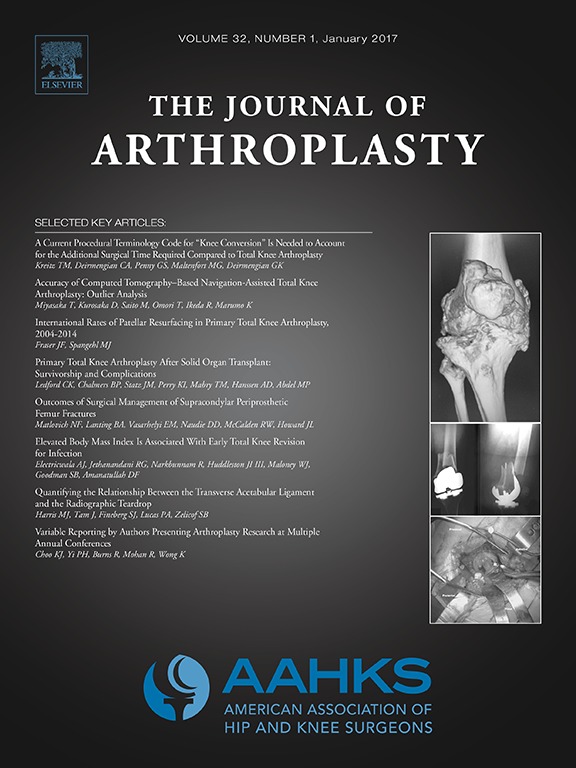
ARTHROPLASTY
Cost of negative pressure wound therapy in TKA not offset by benefit in QoL, satisfaction
J Arthroplasty. 2016 Nov;31(11):2487-249421 patients scheduled for bilateral total knee arthroplasty had one knee randomized to postoperative management with negative pressure wound therapy, while the other knee was managed with conventional dry dressings. The purpose of this study was to compare cost, the incidence of complications, and measures of quality of life between dressing strategies within 10-12 day follow-up. Results demonstrated significantly greater costs associated with NPWT compared to conventional dry dressings, while no significant differences in patient satisfaction or preference were observed. The quality of life scoring for areas of "dressing leakage" and "wound protection" did significantly favour NPWT, however.
Unlock the full ACE Report
You have access to {0} free articles per month.Click below to unlock and view this {1}
Unlock NowCritical appraisals of the latest, high-impact randomized controlled trials and systematic reviews in orthopaedics
Access to OrthoEvidence podcast content, including collaborations with the Journal of Bone and Joint Surgery, interviews with internationally recognized surgeons, and roundtable discussions on orthopaedic news and topics
Subscription to The Pulse, a twice-weekly evidence-based newsletter designed to help you make better clinical decisions
Exclusive access to original content articles, including in-house systematic reviews, and articles on health research methods and hot orthopaedic topics
Or upgrade today and gain access to all OrthoEvidence content for just $1.99 per week.
Already have an account? Log in


Subscribe to "The Pulse"
Evidence-Based Orthopaedics direct to your inbox.
{0} of {1} free articles
Become an OrthoEvidence Premium Member. Expand your perspective with high-quality evidence.
Upgrade Now












































































